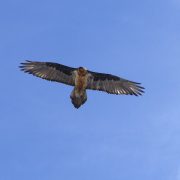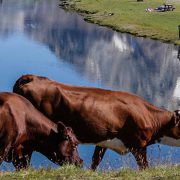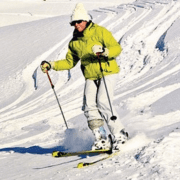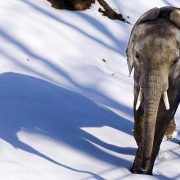Another Summer, Another Vulture
The pair of adult Lammergeyer who nest every year in the cliffs above La Daille have produced another chick this year, their eleventh since they first succeeded in 2002. While the chicks are young, the via ferrata on that side of the gorges is closed, and paragliders are asked not to fly in the area. The photograph above isn’t the chick: it’s one of the parents. Eggs are laid in mid-January and hatch in mid-March, and the young vultures start their first timid flights in August.









